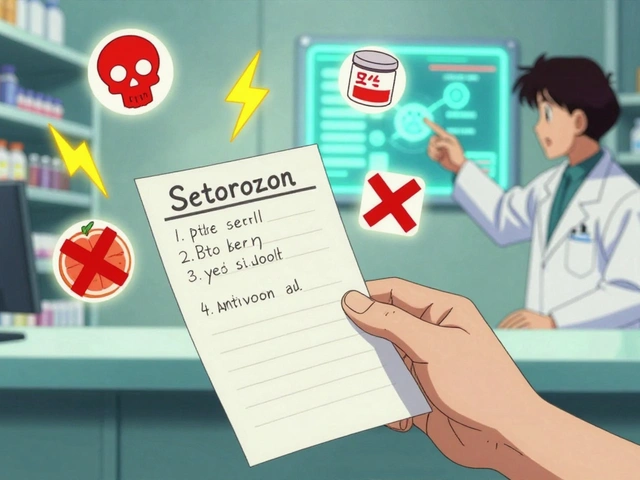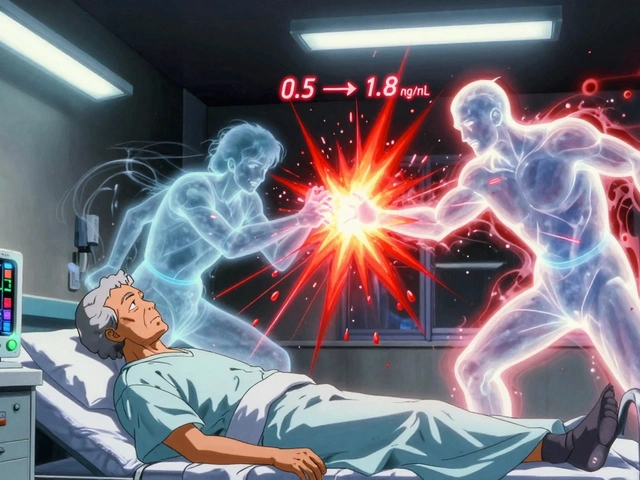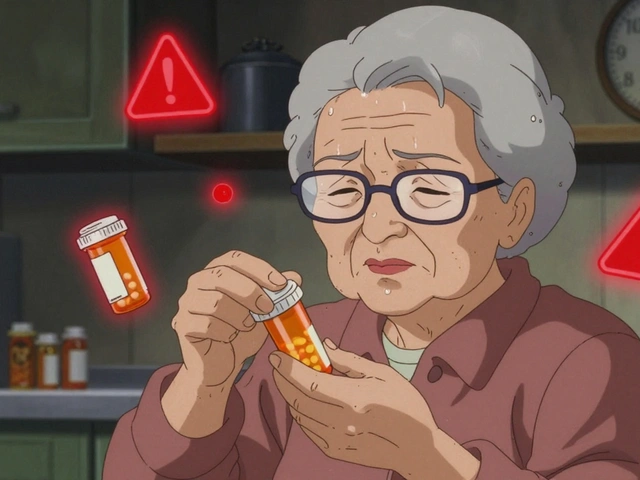When a new drug hits the market, it doesn’t just rely on patents to keep competitors away. In fact, many brand-name drugs enjoy years of market protection even after their patents expire. That’s because of something called regulatory exclusivity - a government-granted shield that stops generic or biosimilar versions from getting approved, no matter what the patent situation says. This isn’t about inventing something new. It’s about the data the company spent millions to generate during clinical trials. And the FDA won’t let anyone else use that data to get their version approved for a set number of years.
What Exactly Is Regulatory Exclusivity?
Regulatory exclusivity is a legal barrier built into U.S. drug laws. It’s not something a company applies for like a patent. Instead, it kicks in automatically when the FDA approves a new drug - if it meets certain criteria. During this period, the FDA cannot accept or approve applications from companies trying to sell a generic or biosimilar version of the same drug.
Think of it this way: patents protect the chemical formula or how the drug is made. Exclusivity protects the entire approval process. Even if a generic company figures out how to copy the drug perfectly, they can’t get the FDA to approve it until the exclusivity clock runs out. This is especially important for drugs that take 10-15 years to develop. By the time they’re approved, the original patent might have only 5 years left. Without exclusivity, the company would have almost no time to make back its investment.
The Main Types of Exclusivity in the U.S.
Not all exclusivity is the same. The FDA grants different types based on the kind of drug and what kind of data was submitted. Here are the big ones:
- New Chemical Entity (NCE) Exclusivity - 5 years. This applies to drugs with a completely new active ingredient. The FDA won’t even accept a generic application for 4 years, and won’t approve it until year 5. Most small-molecule drugs get this.
- Orphan Drug Exclusivity - 7 years. For drugs treating rare diseases affecting fewer than 200,000 people in the U.S. Even if another company makes the same drug for the same disease, they can’t get approved during those 7 years. This is why so many rare disease drugs are coming to market - the incentive is strong.
- Biologics Exclusivity - 12 years. Created by the 2009 BPCIA law, this protects complex biological drugs like Humira, Enbrel, and insulin products. Unlike small-molecule drugs, biosimilars can’t be exact copies, so this longer period helps offset the high cost of development.
- 3-Year Exclusivity - For new uses, new formulations, or new patient populations. If a drug already on the market gets approved for a new condition (like using an antidepressant for chronic pain), the company gets 3 years of protection for that specific use.
These periods can overlap. A drug might have 5 years of NCE exclusivity, 12 years of biologics exclusivity, and 7 years of orphan exclusivity all running at once. The longest one wins. But even if one expires, the others still block competition.
How It Compares to Patents
Patents and exclusivity are often confused, but they’re very different.
| Feature | Regulatory Exclusivity | Patent Protection |
|---|---|---|
| Who grants it? | FDA (automatically upon approval) | USPTO (requires application and approval) |
| Starts when? | Upon FDA approval | Upon patent issuance (often years before approval) |
| Duration | Fixed: 5, 7, 12 years depending on type | 20 years from filing date |
| What’s protected? | The drug product and its clinical data | Specific chemical structure, method of use, or manufacturing process |
| Can it be challenged? | No - it’s enforced by the FDA | Yes - lawsuits can invalidate or delay it |
| Can generics use the data? | No - FDA blocks approval until exclusivity ends | Yes - if they don’t infringe the patent |
The biggest difference? Exclusivity doesn’t care about patents. A drug can lose its patent in year 6, but if it has 12 years of biologics exclusivity, no biosimilar can enter until year 12. That’s why Humira, despite having key patents expire in 2016, didn’t face biosimilars in the U.S. until 2023 - all because of its 12-year exclusivity clock.

Why This Matters for Drug Prices
Exclusivity directly affects how much patients and insurers pay. Drugs with active exclusivity cost, on average, 3.2 times more than their generic equivalents, according to IQVIA. That’s not just a coincidence - it’s the whole point.
Pharma companies argue they need this time to recoup R&D costs. The average cost to develop a new drug is now over $2.6 billion. Without exclusivity, competitors could copy the drug the moment it’s approved and sell it for 10% of the price. That would make innovation unprofitable.
But critics say the system is being stretched too far. Public Citizen and other consumer groups point out that many drugs get multiple layers of exclusivity - orphan status, new use extensions, patent thickets - to keep prices high for decades. In 2023, 47% of all new FDA-approved drugs were for rare diseases, many of which qualify for 7-year exclusivity. Some of these drugs charge over $500,000 per year. The FDA’s own data shows the average innovator drug enjoys 12.3 years of combined patent and exclusivity protection. For biologics, it’s 14.7 years.
How Other Countries Handle It
The U.S. isn’t the only player. Other countries have their own rules:
- European Union - Uses an “8+2+1” system: 8 years of data protection, 2 years of market exclusivity, and a possible 1-year extension for new indications.
- Japan - Grants 10 years of data exclusivity for new chemical entities.
- Canada and Australia - Typically offer 8 years of data protection, but no market exclusivity.
The EU is currently trying to shorten data exclusivity from 8 to 6 years to speed up generic access. The U.S. has seen bills in Congress to reduce biologics exclusivity from 12 to 10 years - but pharmaceutical lobbying has kept those changes from passing.

Real-World Impact: Who Benefits and Who Struggles?
Industry insiders say exclusivity is the most reliable protection they have. One regulatory affairs manager on Reddit said: “NCE exclusivity is our most reliable protection - unlike patents which get challenged in court, the FDA simply won’t approve generics during the 5-year window.”
But for generic companies, it’s a nightmare. They have to invest millions developing a copy without knowing if the exclusivity will be extended or if the patent will be upheld. The FDA’s 2023 Drug Competition Action Plan found that only 42% of generic manufacturers were satisfied with how exclusivity and patent listings are handled. They say the rules are unclear and change mid-process.
Meanwhile, originator companies report 97% satisfaction. The Association for Accessible Medicines found that 89% of brand-name firms believe exclusivity is essential to recover R&D costs. But 68% of generic firms say the 12-year biologics term is too long.
What’s Changing in 2025?
The FDA is actively updating how exclusivity is calculated, especially for combination drugs (like pills with two active ingredients). In March 2024, they released draft guidance to clarify how exclusivity applies when one component is new and the other isn’t.
The Tufts Center for Drug Development predicts that by 2030, the average combined patent and exclusivity period will drop from 12.3 years to 10.8 years. But biologics are likely to keep their 12-year term - they’re too complex and expensive to copy easily.
The real question isn’t whether exclusivity should exist - it’s how long it should last. The system was designed to balance innovation and access. Today, it’s tilted heavily toward protection. As drug prices keep rising, pressure to shorten exclusivity will only grow.
How to Track Exclusivity Status
If you’re in pharma, regulatory affairs, or even a patient curious about when a drug might go generic, the FDA’s Purple Book is your best tool. It’s updated weekly and lists every approved biologic and its exclusivity status. For small-molecule drugs, the FDA’s Orange Book lists patents, but not exclusivity - you have to cross-reference with the drug’s approval letter.
Most companies hire dedicated exclusivity managers. It’s not something you can wing. Calculating overlapping exclusivity periods, international variations, and patent extensions takes months of training and constant monitoring.
Bottom line: Regulatory exclusivity is the hidden engine behind drug pricing. It’s not flashy like a patent lawsuit. But it’s just as powerful - and far more predictable. For now, it’s here to stay. But how long it lasts? That’s the battle still being fought in Congress, courts, and pharmacies across the country.
What’s the difference between patent and regulatory exclusivity?
Patents protect the invention - like a specific chemical structure or how the drug is made. They’re granted by the patent office and can be challenged in court. Regulatory exclusivity protects the drug’s approval data. It’s granted automatically by the FDA after approval and can’t be challenged. Patents start when filed; exclusivity starts when approved. One can expire while the other still blocks competition.
Can a drug have both patent and exclusivity protection?
Yes - and most do. In fact, it’s standard practice. A drug might have a 20-year patent filed at the start of development, but if it takes 12 years to get approved, the patent has only 8 years left. That’s where 5-, 7-, or 12-year regulatory exclusivity comes in. It ensures the company still has time to profit even if the patent runs out early.
Why does orphan drug exclusivity last 7 years?
The Orphan Drug Act of 1983 created this incentive because developing drugs for rare diseases (affecting fewer than 200,000 people in the U.S.) was seen as too risky and unprofitable. The 7-year exclusivity guarantees that even if another company makes the same drug, they can’t get it approved during that time. This has led to a surge in rare disease treatments - over 47% of new FDA approvals in 2023 were for orphan drugs.
Does regulatory exclusivity apply outside the U.S.?
No - each country has its own rules. The U.S. gives 12 years to biologics. The EU gives 8 years of data protection plus 2 years of market exclusivity. Japan gives 10 years. You can’t assume U.S. exclusivity applies elsewhere. Companies must apply for protection separately in each market, and the rules vary widely.
Can a generic drug enter the market before exclusivity ends?
Only if it doesn’t rely on the original company’s data. For example, a generic company could develop a new formulation or delivery method that’s different enough to qualify as a new drug. But if they want to copy the exact drug using the same clinical data, they must wait until exclusivity expires. The FDA blocks approval of any application that references the protected data during the exclusivity period.
Is regulatory exclusivity going away?
No - but its duration is under pressure. Politicians and consumer groups want to shorten it, especially for biologics, to lower drug prices. But the pharmaceutical industry strongly defends it as essential for innovation. While some changes are likely - like reducing the biologics term from 12 to 10 years - exclusivity itself is too deeply embedded in U.S. law to disappear. It’s here to stay, but its length may shrink.









8 Comments
Barry Sanders
Nov 14 2025This exclusivity nonsense is why my insulin costs $300 a vial. The FDA just rubber-stamps corporate greed.
Chris Ashley
Nov 14 2025Bro, I work in pharma compliance and let me tell you - exclusivity is the only thing keeping these companies from folding. You want cheap drugs? Fine. But who’s gonna fund the next cancer cure if generics copy everything the second it hits the market? 😅
kshitij pandey
Nov 16 2025Interesting! In India, we don’t have such long exclusivity - generics help millions afford medicine. But I understand why US companies need time to recover costs. Maybe a middle path? Like 8 years for biologics instead of 12? 🙏
Brittany C
Nov 16 2025The Orange Book doesn’t capture exclusivity - that’s a critical gap in transparency. Regulatory data exclusivity is functionally a non-challengeable monopoly, which creates structural market distortions. The FDA’s Purple Book is underutilized as a public resource.
Sean Evans
Nov 16 2025LOL so the pharma bros want to cry about their $2.6B R&D? 🤡 Meanwhile, they raise prices 20% every January and spend 3x more on marketing than R&D. Exclusivity? More like extortionality. #PharmaCrimes
Anjan Patel
Nov 17 2025Let’s be real - this system is rigged. Orphan drugs? 7 years? I’ve seen companies game the system by splitting one drug into three ‘orphan’ versions just to extend exclusivity. It’s not innovation - it’s legal loophole exploitation. And don’t even get me started on patent thickets.
Scarlett Walker
Nov 18 2025My dad’s on a biologic that costs $15k/month. We’re lucky we have insurance. But if biosimilars came out sooner, maybe we wouldn’t have to choose between rent and refills. I get innovation matters… but people matter more.
Hrudananda Rath
Nov 20 2025It is an incontrovertible fact, grounded in the bedrock of economic theory and regulatory prudence, that the absence of prolonged market exclusivity would precipitate a catastrophic collapse in pharmaceutical innovation - a phenomenon tantamount to the destruction of the very engine of medical progress. To advocate for its reduction is not merely shortsighted; it is an act of profound intellectual and moral negligence.